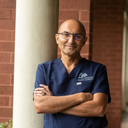You only posted these two frontal images, but first it would be important to look at all the views: the profiles, too (both of them), and also a bunch of views of different angles from the left and right. Those would allow a good assessment of what we want to change, and by how much, and it would allow a surgeon to make morphs, so you can understand better what you're looking for, and fine tune your ideal goal.It's *much* more likely that the natural cartilages require some modification, than that just removing grafts would restore your nose. There's much more finesse to the operation available. And you really only want *one* more operation!

